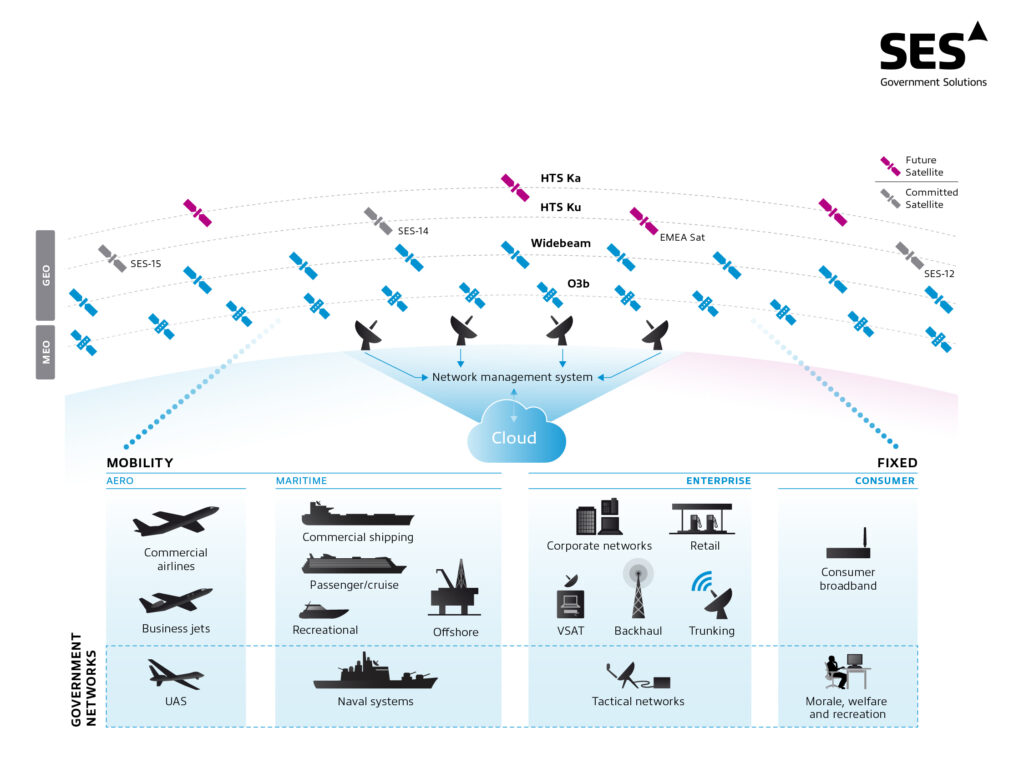The United States military is most effective and successful when it can accomplish missions that ensure the security of the country and its people while sustaining as few casualties to American service personnel as possible. It’s for this reason that Unmanned Aerial Vehicles (UAVs) are so widely utilized in the military today.
The United States military owns thousands of UAVs. This includes those manufactured by General Atomics – such as the Predator, Grey Eagle, and Reaper.
One thing that all of these UAVs have in common is the ability to conduct tactical military operations in theater without exposing American military personnel to danger. Another thing that they have in common is a need to be connected to a remote pilot – something that’s accomplished in many instances through commercial satellite communications (COMSATCOM).
Since Wi-Fi or line-of-sight communications aren’t available or simply won’t work for piloting and transmitting the data from UAVs (for obvious reasons), satellite is the best and most effective option. As sensor performance improves and customer requirements increase, transmission rates for UAV data is growing rapidly, driving up the amount of satellite bandwidth used as well as the cost.
However, with a new generation of satellites being launched, the military could be poised to more effectively meet the growing data transmission requirements of the UAVs at even a lower cost than today.
The next generation of satellites – known as High Throughput Satellites (HTS) – use tens to hundreds of small spot beams instead of the one large coverage beam of traditional geosynchronous (GEO) satellites. While these HTS beams are smaller in coverage area, they are grouped together to cover large areas, and each smaller beam delivers significant benefits over traditional GEO satellites.
First, this new technology enables frequency reuse and thus higher capacity for the satellite. This is a more efficient use of spectrum and increases the number of users per satellite, reducing the cost per bit of for the COMSATCOM operator and effectively slashing the cost to enable the communications between a UAV and its operator.
 Cost efficiency is essential for these missions for a few reasons. First, the federal government is looking to save money whenever and wherever it can due to shrinking budgets. This savings can be reinvested into the UAV programs and missions to effectively deliver increased performance without an increase in cost. This means that for the same budget, the military can receive higher quality video and images and more accurate intelligence, which can enable better, more informed decisions.
Cost efficiency is essential for these missions for a few reasons. First, the federal government is looking to save money whenever and wherever it can due to shrinking budgets. This savings can be reinvested into the UAV programs and missions to effectively deliver increased performance without an increase in cost. This means that for the same budget, the military can receive higher quality video and images and more accurate intelligence, which can enable better, more informed decisions.
Then there’s the issue with security. As many of the speakers at this year’s SatCon Conference shared – including Lt. Gen. John “Jay” Raymond – space is no longer an uncontested environment. There are many threats to satellites and to satellite communications that can drastically impact the military’s ability to conduct operations and even threaten UAV missions.
Luckily, HTS satellites can also help in this area.
HTS satellites, by their nature, are more resilient. Instead of there being one single satellite beam to deny through jamming, there are many separate beams that need to be jammed. Also, jamming needs to be done from within a beam’s coverage area, which is only a few hundred kilometers wide for an HTS satellite.
Jamming a beam is much easier to accomplish when the coverage area includes 10 to 20 countries instead of a half of a country. With HTS satellites, being in the coverage area effectively means that bad actors looking to jam the communication will be geographically close to military forces.
Another advanced feature of many HTS satellites is a digital signal processor that replaces the waveguides and RF switches of older satellite design. This processor is often called a Channelizer or a Digital Transparent Processor (DTP). This technology enables HTS satellites to quickly and effectively reconfigure the satellite to meet customer demands, to nullify jamming signals through nulling the interfering signal, or to quickly relocate the operational users to other frequencies.
With their ability to operate more effectively, efficiently and securely, HTS satellites are clearly the future for UAV operations. Unfortunately, current UAVs are not designed to take advantage of the features of HTS satellites. However, the enabling technology is advancing rapidly and it won’t be long before the military adopts this new capability. .
In my next article on the GovSat Report, I’ll look at the different requirements necessary for operating UAVs on HTS satellites, and what the military needs to do to make the switch.
Also, click the links below for additional HTS information and resources:
- Discover the coverage areas for HTS GEO: SES-14, SES-15and SES-16
- Why Big Beams are a Big Deal to the Military – The GovSat Report
- How HTS investment today could spell serious savings for the military tomorrow – The GovSat Report
- Three New Birds for SES – Press Release
- What went into the design of SES first HTS satellite? – Q&A
